What is Negligent Driving? Understanding the Elements of a Negligent Driver Claim
A split second of carelessness behind the wheel can lead to devastating consequences. Negligent driving is a pervasive issue that endangers the lives of millions of people each year. But what exactly constitutes negligent driving, and how can it be prevented? This blog post will delve into the world of negligence on the road, exploring its various forms, the legal implications, and effective strategies to minimize the risk of accidents.
Key Takeaways
Negligent driving is the failure to exercise due care while operating a vehicle, resulting from distractions, fatigue and substance impairment.
Proving a driver’s negligence in a car accident claim requires an understanding of four essential elements: duty of care, breach of duty, causation and damages.
Strategies for preventing negligent driving include adhering to traffic regulations, eliminating distractions, prioritizing rest and self-care. Appointing designated drivers when under the influence.
Understanding Negligent Driving
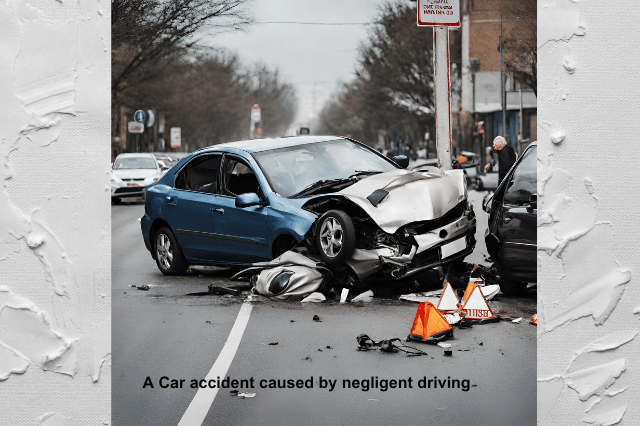
Negligent driving, which includes reckless driving, is a serious problem that can lead to severe motor vehicle accidents and life-altering injuries. It involves not exercising the necessary caution while operating a motor vehicle, which is when negligence occurs, leading to tragic consequences.
Grasping the concept of negligent driving requires a clear understanding of its definition and the prevalent causes behind such accidents.
Defining Negligent Driving
Negligent driving is the failure to exercise due diligence while operating a vehicle, resulting in collisions and losses. Legally, driving negligence is characterized by a failure to exercise due care when operating a vehicle, potentially causing personal injuries and vehicular damage. Drivers are legally obligated to adhere to the regulations set forth by the applicable laws, and failure to do so can lead to a car accident case.
Examples of driver negligence include:
Veering between lanes
Disregarding traffic laws
Operating a vehicle while distracted
Operating a vehicle while under the influence of drugs or alcohol
These actions can result in car accident victims experiencing serious injuries, property damage, and emotional trauma.
Common Causes of Negligent Driving

Distracted driving, fatigued driving, excessive speeding, and intoxicated driving are the most common causes of negligent driving. Unsafe driving practices can have serious consequences. Distracted driving, such as texting or consuming food while driving, is particularly dangerous as it takes the driver’s attention away from the road, increasing the risk of accidents.
Fatigued driving is another significant contributor to accidents, as driving while too tired or exhausted to concentrate adequately on the task of driving can lead to negligence. Substance-impaired driving is also a common behavior among negligent drivers. Operating a motor vehicle under the influence of drugs or alcohol can have detrimental effects on coordination, judgment, and reaction times, making it a hazardous and unlawful activity.
In the United States alone, 28 fatalities occur daily as a result of motor vehicle collision incidents caused by drunk driving.
Identifying Types of Negligent Driving
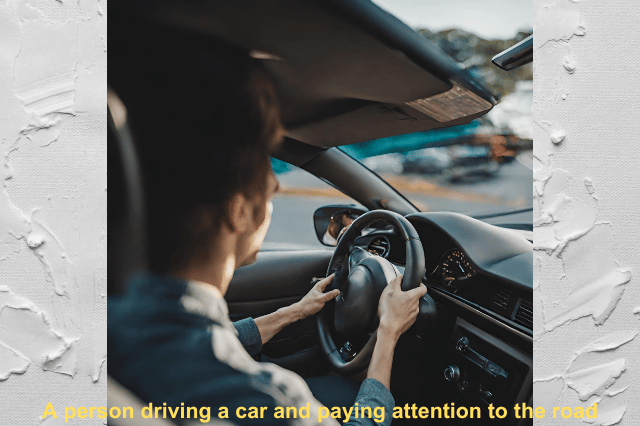
Various types of negligent driving can have a significant impact on road safety. Some examples include:
Distractions, such as texting or talking on the phone while driving
Fatigue, which can impair a driver’s reaction time and decision-making abilities
Substance impairment, including driving under the influence of alcohol or drugs
These behaviors, such as ignoring the speed limit, increase the risk of accidents, jeopardizing the lives of drivers, passengers, and pedestrians alike.
Familiarizing oneself with these types of negligence plays a pivotal role in adopting preventive measures and fostering a safer driving environment.
Distracted Driving
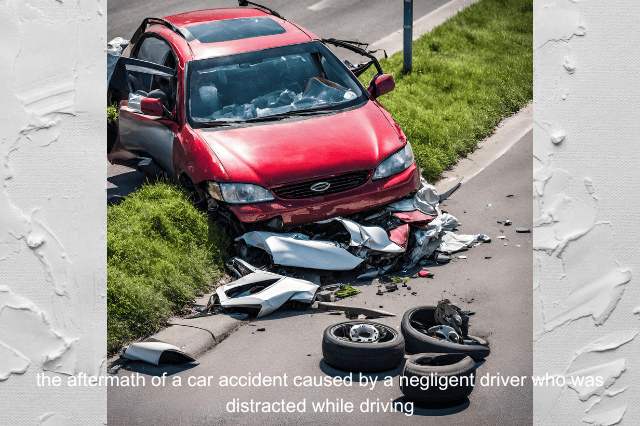
Distracted driving is a leading cause of accidents and includes any activity that takes attention away from the road, such as texting, eating, or adjusting the radio. The consequences of distracted driving can be dire, resulting in accidents, injuries, and even fatalities. In fact, texting while driving is considered one of the most dangerous forms of distracted driving, as it requires visual, manual, and cognitive attention from the driver.
Eliminating distractions and maintaining sole focus on the road is a key aspect of safe driving. This includes putting away cell phones, setting the GPS before starting the trip, and refraining from engaging in activities that require attention away from driving.
Fatigued Driving
Fatigued driving is another significant contributor to accidents, as exhaustion can substantially reduce a driver’s alertness, decision-making abilities, and reaction times. Causes of fatigued driving can include a lack of sufficient sleep, extended work hours, or engaging in intensive activities.
Mitigating the perils of fatigued driving necessitates having sufficient rest before driving and taking breaks or naps if drowsiness occurs on the road. By prioritizing rest and self-care, drivers can maintain their alertness and focus on the road, reducing the likelihood of making mistakes, causing accidents, and serious injury.
Substance-Impaired Driving

Substance-impaired driving refers to operating a motor vehicle while under the influence of drugs or alcohol. This form of driver negligence is extremely dangerous, as it can significantly impair a driver’s coordination, judgment, and reaction times, leading to severe accidents, serious injury, and potential legal consequences.
Preventing substance-impaired driving and promoting road safety requires measures such as appointing a designated driver, using ride-sharing services, or opting for public transportation after alcohol or drug consumption. By ensuring a sober driver is behind the wheel, the risk of accidents caused by substance impairment can be significantly reduced.
Proving Negligence in a Car Accident Claim
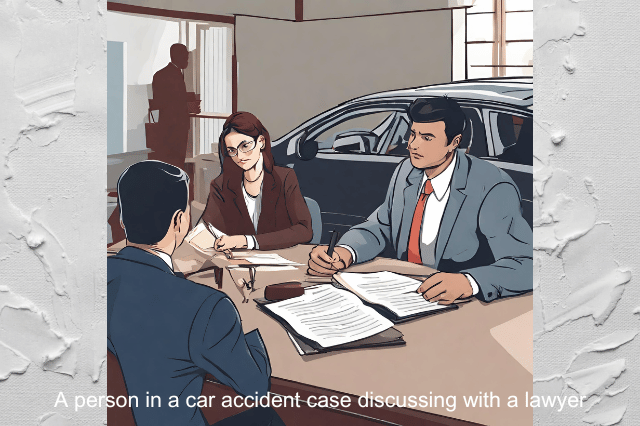
In the event of an accident due to negligence, establishing liability becomes vital for receiving compensation for damages. The process of proving negligence in a car accident claim involves four essential elements:
Duty of care
Breach of duty
Causation
Damages
Knowing how these elements apply to a specific case can be instrumental in securing a successful claim.
Duty of Care
The first element in proving negligence is establishing the duty of care, which is the legal obligation to act responsibly and carefully while driving. Drivers need to exercise reasonable care when driving a motor vehicle to prevent causing harm to others on the road; this is their legal duty.
This duty of care encompasses various responsibilities, including:
Adhering to traffic regulations
Maintaining a safe following distance
Remaining vigilant of one’s environment
Avoiding aggressive driving
Failure to uphold this duty can result in a breach of duty, leading to accidents and damages.
Breach of Duty
A breach of duty occurs when a driver fails to adhere to the standard of care, resulting in accidents and injuries. Examples of breaching the duty of care include speeding, ignoring traffic signals, and driving under the influence of drugs or alcohol.
In a car accident claim, it is crucial to demonstrate that the defendant breached their duty of care, causing the accident. This can be achieved by providing evidence of the defendant’s negligent actions, such as traffic camera footage, witness statements, or police reports.
Causation
Establishing causation is the third element in proving negligence and involves demonstrating a direct link between the breach of duty and the resulting accident or damages. In other words, it must be proven that the defendant’s negligent actions directly caused the accident and the resulting injuries or damages.
This can be a complex process, as it requires providing evidence that supports the cause-and-effect relationship between the defendant’s breach of duty and the accident. Expert witnesses, such as accident reconstruction specialists or medical professionals, can be valuable resources in establishing causation.
Damages
The final element in proving negligence is demonstrating the damages incurred as a result of the accident. These damages can include:
Physical injuries
Vehicle damage
Medical expenses
Lost wages
Other financial losses
To receive compensation for these damages, it is essential to provide documentation of the losses, such as medical bills, repair estimates, and proof of lost income. A personal injury lawyer can assist in gathering the necessary evidence and advocating for the appropriate compensation on behalf of the car accident victim.
Strategies for Preventing Negligent Driving
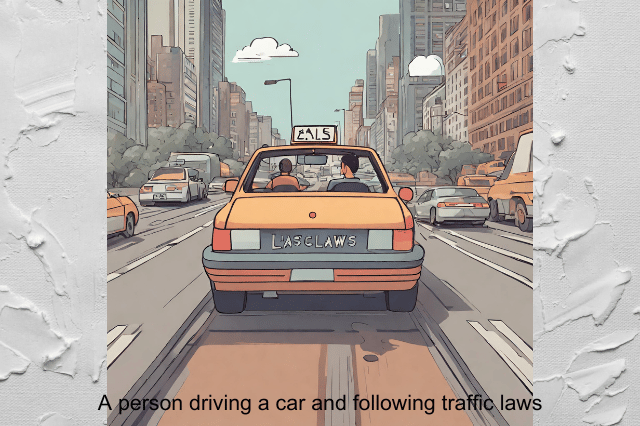
Preventing negligent driving is key to upholding road safety and reducing the risk of accidents. By adhering to traffic regulations, eliminating distractions, and prioritizing rest and self-care, drivers can significantly reduce the likelihood of being involved in an accident caused by negligence.
Additionally, appointing a designated driver when under the influence of alcohol or drugs can further contribute to a safer driving environment.
Staying Focused on the Road
Maintaining focus while driving is vital to steer clear of negligence-induced accidents. This involves eliminating distractions, such as using a cell phone, adjusting the radio, or engaging in other activities that require attention away from the road.
By staying attentive, avoiding excessive speeding, and concentrating on the task of driving, drivers can maintain a safe following distance, react quickly to sudden changes in traffic conditions, and avoid accidents caused by unforeseen circumstances. Staying focused on the road not only ensures one’s own safety but also contributes to the overall safety of other road users.
Prioritizing Rest and Self-Care
Adequate rest and self-care are indispensable for staying alert and attentive while driving. Fatigued driving is dangerous and a form of driver negligence that can lead to serious accidents and injuries.
To avoid the risks of fatigued driving, drivers should obtain sufficient sleep, take regular breaks during long drives, and refrain from driving while exhausted or under the influence of drugs or alcohol. By prioritizing rest and self-care, drivers can maintain their alertness and focus on the road, reducing the likelihood of making mistakes and causing accidents.
Designating a Sober Driver
Designating a sober driver is paramount to curb substance-impaired driving and enhance road safety. This involves:
Choosing a responsible individual
The designated driver should abstain from consuming alcohol or mind-altering substances
The designated driver should be able to safely operate a vehicle.
In cases where a designated driver is not available, alternative transportation options, such as ride-sharing services or public transportation, should be utilized. By ensuring a sober driver is behind the wheel, the risk of accidents caused by substance impairment can be significantly reduced, making the roads safer for everyone.
The Role of a Car Accident Lawyer in Negligent Driving Cases
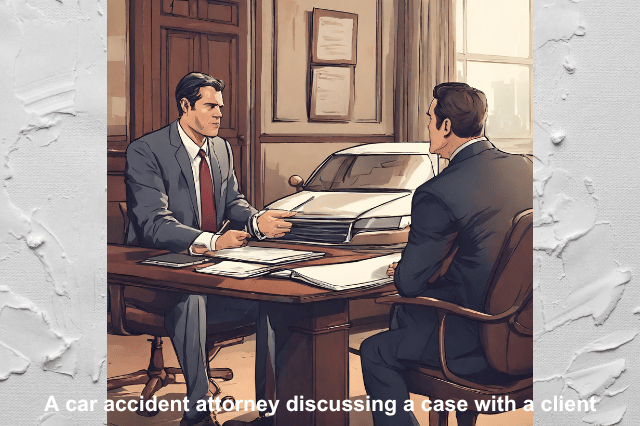
Car accident lawyers and attorneys, especially an experienced legal professional, assume a pivotal role in driver negligence cases, guiding victims through their legal options and helping them secure rightful compensation for their injuries and losses.
From case evaluation to negotiation and litigation, an auto accident lawyer can provide invaluable support and guidance throughout the legal process.
Case Evaluation
An auto accident attorney can help victims assess the strength of their claim and determine the potential compensation they may be entitled to. This involves evaluating the four essential elements of a driver negligence claim:
Duty of care
Breach of duty
Causation
Damages
By conducting a thorough case evaluation, an auto accident attorney can:
Identify the strengths and weaknesses of a claim
Develop a strategic legal approach
Advise the victim on the best course of action to take in order to maximize their chances of success.
Negotiation and Litigation
In cases where a settlement cannot be reached through negotiation, a car accident attorney can represent the victim in court and advocate for fair compensation. Through litigation, the attorney will present evidence of the defendant’s negligence, establish causation, and demonstrate the damages incurred as a result of the accident.
Whether through negotiation or litigation, a car accident attorney can provide invaluable support and guidance throughout the legal process, ensuring that the victim’s rights are protected and that they receive the compensation they deserve for their injuries and losses.
Summary
Negligent and reckless driving is a pervasive issue that endangers countless lives each year. Understanding the various types of negligent and reckless driving, the legal implications, and effective strategies for prevention is crucial in order to maintain road safety. By staying focused on the road, prioritizing rest and self-care, and designating a sober driver, drivers can significantly reduce the likelihood of accidents and contribute to a safer driving environment for all. Should an accident occur due to negligence, a car accident attorney can provide invaluable support and guidance, ensuring that victims receive the compensation they deserve.
Further Reading: Drunk and Impaired Driving
Frequently Asked Questions
How many points is a negligent driver in California?
A driver in California is considered a negligent operator when their driving record shows 8 or more points accumulated over the course of 36 months.
What is considered a negligent operator?
A negligent operator is someone who accumulates too many points on their driving record within a certain period of time, as defined by the DMV’s Negligent Operator Treatment System (NOTS). These points are assigned for traffic violations, and if a driver reaches the prescribed thresholds, they may be suspended from driving. The DMV will notify the driver of their suspension and the length of time it will last. During this period, the driver will not be allowed to operate a motor vehicle. The DMV may also require the driver to take a driving safety course or other corrective action before they can be
What is the difference between reckless and negligent?
Negligence is the failure to exercise reasonable care, while recklessness is knowingly ignoring danger and disregarding the safety of others.
What is negligent driving in Washington state?
Negligent Driving in Washington state is defined as operating a motor vehicle in a manner that is both negligent and likely to endanger people or property, while exhibiting the effects of alcohol, drugs, or any intoxicants.
What are the 4 elements of negligence?
In a negligence claim, a plaintiff must establish four distinct elements: duty of care, breach, causation, and damages.
Legal Disclaimer: The content provided on carcrashattorneys.org is for general informational purposes only. It is not intended as legal advice, nor does it constitute an attorney-client relationship. The information may not be accurate, complete, or updated when viewing. Carcrashattorneys.org and its authors disclaim all liability for any actions taken or not taken based on the content of this site. Always consult with a licensed attorney in your jurisdiction before making any legal decisions. This website may contain links to other websites. We are not responsible for the content, accuracy, or opinions expressed in such websites, and such websites are not investigated, monitored, or checked for accuracy or completeness by us.

